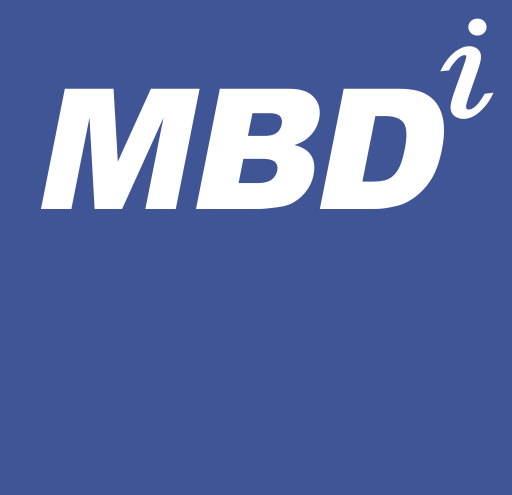The impact of the MBD (OI&Q)i Phase on revenue generation
With commercial markets reeling in today’s economy, future revenue growth is becoming more uncertain. With increased competition for fewer opportunities with leaner value, if your organization’s position is one of strategic revenue growth, then you need to focus on the concept of an Opportunity Identification & Qualification (OI&Q)i Phase based upon Intelligence gathering.
(OI&Q)i is not just a line item in an organization’s Business Development process. As it becomes more difficult to maintain or grow revenue, (OI&Q)i may be the most critical decision point there is. That’s because, when faced with an opportunity, (OI&Q)i eliminates emotional judgments to pursue it. Instead, it sets the stage for the HUMINT® Client Engagement Process, which presents a deliberate set of quantitative and qualitative steps to follow when assessing a suspected opportunity.
First, has your team invested the time to understand the opportunity and gathered critical Intel on this project? Has the team developed Intel plans, call plans, and scripts for gathering Human Intel (HUMINT®) when engaging the key decision-making people involved? Does your team understand all aspects of the customer’s situation and know how to build a trusting relationship? Have they discussed current and future issues, and discovered the real challenges long before any public announcement?
Second, does this opportunity match up with your organization’s core capabilities and expertise? Do you possess the recognized credentials to do the job? If shortfalls exist, you might consider teaming with another company that fills your capability gap.
Or, does this opportunity represent a strategic decision to build business in a new segment? Does it make sense for your firm to seek an acquisition with the necessary expertise?
Third, does your Business Development team possess sufficient resources and bandwidth to “pursue it right,” assuming there’s a real likelihood of a win? A client recently shared a point of view, noting the use of quantitative criteria in the decision-making process was of utmost importance. It allowed the Business Development team to decide on the reasonable probability of a win in a manner which was objective and free of emotional bias.
A valid exception to the “high-probability win” school of thought does exist. One way to familiarize a potential customer with your firm’s capabilities and credentials is to bid a low-probability opportunity. When executed as part of a comprehensive marketing strategy, activity like this can be the basis for relationship-building and future work.
It all comes down to the (OI&Q)i strategy of bidding smartly. That means gathering first person, Human Intel by asking the hard questions mentioned previously and disqualifying opportunities early on—as part of your Business Development strategy. Let’s not gloss over the act of disqualifying. It figures prominently in the measurement of the Business Development team’s pipeline.
This brings up the question asked recently about how much emphasis company leadership places upon not disqualifying low-probability opportunities early and, as a consequence, significantly affecting the size of a pipeline and the eventual probability of winning.
A client recently shared the answer to this from experience. Bidding smartly is not necessarily building a fat pipeline. In her reality, if it’s in the pipeline, it’s real. Consequently, her team has a high win rate record, although their pipeline is not of the same magnitude as others with a win rate of only 15 percent.
There are added benefits of utilizing the (OI&Q)i Phase in your Business Development process and bidding smartly. From a financial standpoint, by preventing low-probability opportunities from ever entering the pipeline, the Business Development team is a prudent steward of the corporation’s bid and proposal budget. More critical than the financial aspects are personnel motivation and psychological ramifications. Bidding everything has the effect of de-motivating the Business Development team due to their efforts being negated by writing proposals for unqualified opportunities.
A client recently offered from experience that after too many losing bids, it becomes harder and harder to get the team interested and excited about the next pursuit, given the extent of time and resources that goes into preparing a response to an RFP.
There’s another drawback that’s seldom factored in when low probability opportunities are not disqualified early on. Although not always required in bidding, it’s in the “orals” portion of an RFP, where enthusiasm and work ethic play a big part, that true belief in an organization’s capability—or lack thereof— eventually seeps out.
Responding to corporate pressures may be the real “fly in the ointment” with respect to executing the (OI&Q)i Phase. Can the Business Development team stand their ground and disqualify opportunities early-on thus saving overhead time and expense, while attempting to meet corporate growth goals as measured by pipeline size, number of bids and proposals submitted? If the Business Development team is constantly overridden by management and directed to bid non-qualified opportunities, an untenable situation develops leading to mistrust and unintended consequences along with a downward spiral of productivity and success.
In many aspects, a full blown Opportunity Identification and Qualification Phase based upon gathering first person, Human Intel is the missing link in most organizations’ Business Development revenue growth strategies.
Followed correctly, the MBDi (OI&Q)i Phase can set the stage for a valid pipeline, prudently invested proposal budget, and high win rate demonstrated by an excited and motivated BD team—individuals who believe in their heart of hearts they can and will win.


